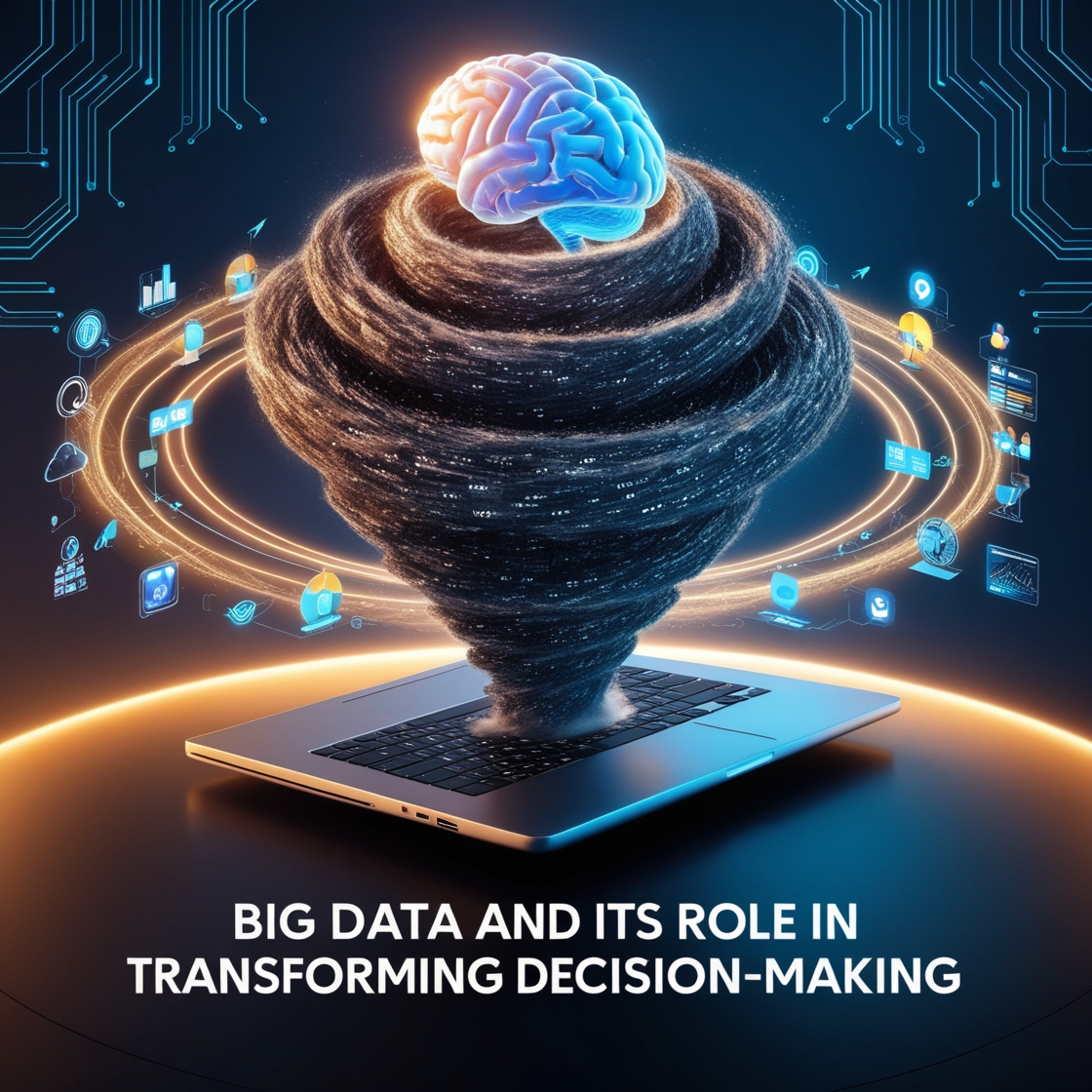Introduction
Big Data has become a buzzword in the tech world, often tossed around in discussions about innovation and efficiency. But what does it really mean, and how does it transform decision-making processes? In this article, we’ll delve deep into the essence of Big Data, its key components, and its impact on modern decision-making. Get ready for an enlightening journey through data-driven insights!
1. What is Big Data?
1.1 Defining Big Data
Big Data refers to extremely large datasets that are complex and difficult to process using traditional data processing methods. These datasets come from various sources, including social media, sensors, and transactional systems. The sheer volume, velocity, and variety of this data are what make it “big.”
1.2 The Three V’s of Big Data
- Volume: The amount of data generated and stored.
- Velocity: The speed at which data is generated and processed.
- Variety: The different types of data, from structured to unstructured.
2. Components of Big Data
2.1 Data Sources
Big Data is derived from a multitude of sources. These include:
- Social Media: Tweets, posts, and user interactions.
- IoT Devices: Sensors and connected devices.
- Transactional Data: Sales and customer interactions.
- Web Logs: Data from browsing activities.
2.2 Data Storage
Managing Big Data requires sophisticated storage solutions. These often involve:
- Cloud Storage: Scalable and flexible storage options.
- Data Lakes: Central repositories that allow you to store raw data in its native format.
2.3 Data Processing
Processing Big Data involves:
- Batch Processing: Handling large volumes of data in chunks.
- Stream Processing: Real-time processing of data as it flows in.
3. Big Data Technologies
3.1 Hadoop
Hadoop is an open-source framework that enables the distributed processing of large datasets across clusters of computers using simple programming models. Its key components include:
- HDFS (Hadoop Distributed File System): A scalable file system designed for storing large files.
- MapReduce: A programming model for processing and generating large datasets.
3.2 Spark
Apache Spark is a fast and general-purpose cluster-computing framework. Unlike Hadoop, Spark provides in-memory processing capabilities, making it faster for iterative algorithms.
4. The Role of Big Data in Decision-Making
4.1 Enhanced Decision-Making
Big Data allows organizations to make more informed decisions by providing comprehensive insights. For example:
- Predictive Analytics: By analyzing historical data, companies can forecast future trends and behaviors.
- Real-Time Analytics: Immediate insights can be gathered from live data feeds, enabling quick decision-making.
4.2 Data-Driven Strategies
Companies are leveraging Big Data to craft data-driven strategies that:
- Improve Customer Experience: Tailoring products and services to meet customer needs.
- Optimize Operations: Streamlining processes and reducing inefficiencies.
4.3 Case Studies
4.3.1 Retail Sector
Retailers use Big Data to analyze shopping patterns and inventory levels. This helps in optimizing stock levels and personalizing marketing campaigns.
4.3.2 Healthcare
In healthcare, Big Data is used to predict disease outbreaks, optimize treatment plans, and improve patient outcomes.
5. Challenges in Utilizing Big Data
5.1 Data Privacy
With vast amounts of data being collected, ensuring the privacy and security of sensitive information is a significant challenge.
5.2 Data Quality
The accuracy and reliability of data must be maintained to ensure effective decision-making.
5.3 Integration Issues
Combining data from various sources can be complex and require robust integration strategies.
6. Future Trends in Big Data
6.1 AI and Machine Learning Integration
The integration of AI and machine learning with Big Data is set to revolutionize data analysis, making it more automated and insightful.
6.2 Advanced Analytics
Future advancements will likely focus on more sophisticated analytics techniques, including:
- Predictive Modeling: Enhancing forecasting capabilities.
- Prescriptive Analytics: Providing recommendations for future actions.
Conclusion
Big Data has undeniably transformed the landscape of decision-making across various sectors. By harnessing the power of vast and diverse datasets, organizations can make more informed and strategic decisions. However, the journey is not without its challenges. Ensuring data privacy, maintaining data quality, and addressing integration issues are crucial for leveraging Big Data effectively. As technology evolves, the role of Big Data in shaping decision-making processes will only become more profound.
FAQs
1. What industries benefit the most from Big Data?
Industries such as retail, healthcare, finance, and manufacturing gain significant advantages from Big Data through enhanced customer insights and operational efficiencies.
2. How does Big Data impact customer experience?
Big Data helps personalize customer interactions by analyzing purchasing patterns, preferences, and feedback, leading to more tailored services and products.
3. What are the primary challenges of implementing Big Data?
Challenges include ensuring data privacy, maintaining data quality, and integrating data from disparate sources.
4. How does AI contribute to Big Data analytics?
AI enhances Big Data analytics by automating data processing, providing advanced insights, and enabling predictive and prescriptive analytics.
5. What are the future trends in Big Data?
Future trends include greater integration with AI and machine learning, advanced predictive and prescriptive analytics, and more sophisticated data processing technologies.
